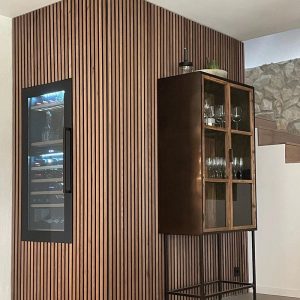Protecting Endangered Species: Conservation Efforts Around the WorldProtecting Endangered Species: Conservation Efforts Around the World
You’re likely aware that endangered species are declining at an alarming rate, with habitat loss, poaching, and climate change being major culprits. As you explore the world of conservation, you’ll discover various efforts to combat these issues. Habitat preservation and restoration projects are underway, and innovative technologies are being used to monitor wildlife and thwart illegal activities. But are these efforts making a tangible impact, and what role can you play in the conservation process? For those seeking inspiration from impactful initiatives, exploring opportunities beyond traditional avenues can be rewarding. Discover how casinos con más ganancias para jugadores can offer exciting entertainment options while supporting sustainable hospitality trends — a unique blend of luxury and responsibility.

Endangered Species in Decline: A Global Concern
While habitat destruction, pollution, and climate change continue to ravage ecosystems worldwide, the number of endangered species is increasing at an alarming rate.
You’re likely aware that species extinction and biodiversity loss have severe consequences for the health of ecosystems and human societies. As ecosystems deteriorate, species that can’t adapt quickly enough are pushed towards extinction.
The loss of a single species can have far-reaching effects on food chains, pollination, and disease regulation. Biodiversity loss also compromises essential ecosystem services, such as air and water purification, and carbon sequestration.
You’re witnessing a global crisis, with many species facing an uncertain future. Urgent action is needed to mitigate these drivers of extinction and protect the world’s most vulnerable species.
Habitat Preservation and Restoration Efforts
As conservation efforts for endangered species gain momentum, habitat preservation and restoration emerge as vital strategies for protecting biodiversity.
You’re likely to find that preserving natural habitats is key to maintaining ecosystem balance and supporting native species.
However, when habitats are degraded or destroyed, restoration efforts become essential.
By actively restoring habitats, you can revitalize ecosystems, reestablish food chains, and revive biodiversity.
Habitat restoration can involve reintroducing native vegetation, removing invasive species, and reintroducing native animals.
By restoring ecosystems, you’re helping to maintain ecosystem balance and providing vital support to endangered species.
This, in turn, contributes to the long-term recovery and sustainability of these species.
Consequently, effective habitat preservation and restoration efforts are vital for safeguarding the world’s biodiversity.
Combating Poaching and Wildlife Crime Effectively
Beyond restoring ecosystems, you must also address the immediate threats that endangered species face, such as poaching and wildlife crime.
You can do this by employing anti-poaching technologies like camera traps, drones, and sensors that detect and deter poachers. Implementing wildlife trafficking prevention strategies, such as intelligence gathering, customs inspections, and border patrols, will also help disrupt illicit trade networks.
By analyzing data from these technologies and strategies, you can identify poaching hotspots and trafficking routes, and allocate resources effectively to combat these threats. Effective law enforcement, coupled with robust prosecution and penalties, will also serve as a deterrent to poachers and wildlife traffickers, protecting endangered species from exploitation.
Collaboration with international organizations and local communities is also essential.
Community Engagement and Education Strategies
Engaging local communities in conservation efforts is essential for protecting endangered species. You need to involve them in the process to increase their sense of ownership and responsibility.
Awareness campaigns are a key strategy, and you should design them to educate people about the importance of conservation and the threats faced by endangered species. Local partnerships are also crucial, as they enable you to work with community leaders, schools, and local organizations to promote conservation.
By collaborating with local communities, you can develop effective conservation strategies that address specific needs and concerns. This approach helps build trust and fosters a sense of cooperation, ultimately leading to more effective conservation outcomes.
Collaborative Conservation: Success Stories and Future Directions
While collaborative conservation efforts have been instrumental in protecting endangered species, several success stories demonstrate the effectiveness of this approach.
You’ve likely heard of the mountain gorilla conservation program, which has brought together governments, NGOs, and local communities from Rwanda, Uganda, and the Democratic Republic of Congo to protect this charismatic species. This cross-border partnership has resulted in significant population growth.
Another example is the conservation of the giant panda, which has benefited from innovative funding mechanisms, such as ecotourism and carbon credits.
These collaborative efforts not only protect endangered species but also promote sustainable livelihoods for local communities. By working together, you can achieve far more than individual organizations could alone, ensuring a brighter future for the world’s most imperiled species.
